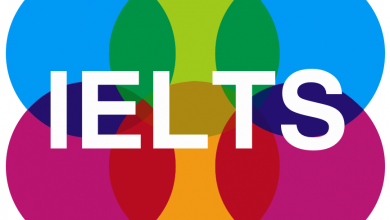What is online education?

It is the one that allows the interaction of students and teachers through the exclusive use of online communication and information tools such as networks, the internet, and electronic equipment, for example, the computer that facilitates access to information.
Online education must be done in a synchronized manner, that is, coincide with a planned schedule for a class session. Where all students attend to achieve the proposed pedagogical goals. An example of online education is virtual classes taught through Zoom and Google Hangouts. Which once finished can be uploaded on different platforms such as Blackboard, Canvas and thus can be reviewed by both teachers and students.
Online and distance education are the ones that have had the most impact during the pandemic. Since it has been implemented at the different levels of basic education, from preschool to high school.
visit us: Star Academy Nmdcat Fee Structure
Characteristics of online education
It is interactive since there is a specific schedule for the meetings, in addition to having interactions between the participants and the teacher in real-time.
Distance tutoring: the student has access to remote tutoring any day, being able to easily communicate with his tutor.
New ways of evaluation: this is because different evaluation strategies can be carried out, such as debates by video calls that allow the acquisition of learning and exams with timers on online platforms, which allow teachers to evaluate students and review the evolution of the same.
Advantages of online education
- It provides the possibility of accessing information and, in turn, reduces possible geographical barriers since it does not matter where the student is located, it allows them to join classes remotely.
- It is flexible since it favors the acquisition of learning remotely, and it has a schedule to be carried out.
- Allows teachers or tutors to carry out a personalized accompaniment to each student through advice, support, guidance and deepening of the content during study hours.
- It is a type of education where both debate and dialogue are promoted, forming a community that is linked to group learning.
- In online and distance education, economic savings are promoted, both in the use of physical spaces of the institutions, as well as means of transport.
What is distance education?
It is a study modality that takes place without the student being present in the classroom. This educational method lends itself to students managing or administering their own time. Pace, and learning space, in addition to this method of education unlike For online education. It is not essential to have an internet connection, since the materials used can be physical. For example, books, notebooks, guides, or any illustration.
The material that the students will use can be delivered in person, by email, and by correspondence. In addition, they can have feedback with their teacher through phone calls, text messages, or electronic messaging.
Advantages of distance education
- It allows students to manage their space, time, and way of learning.
- Distance education programs have a wide scope, as they reach all students regardless. Of their socioeconomic level because the technological resources required for classes are very basic.
- Students develop autonomy and responsibility since they choose how to study according to their available time, balancing it with other activities that they must carry out, for example, university students balance their work, family, and student responsibilities by paying attention to each one.
- Students are the ones who take the lead in their education, so they make it a proactive learning framework.
Differences between online and distance education
We would need a comparative table to better explain the differences between online and distance education, however here we describe some of them:
- Online education is carried out through platforms that allow students and their tutors to connect through group video calls. So there is a need to have an internet connection, while in distance education. It is not necessary to have this. since there are no live classes.
- Online education is based on synchrony, that is, both teachers and students must meet at specific times. While distance education students are the ones who decide their schedule, time, and place of study.
- In online education, classes are done directly and live. Which provides the opportunity to hold forums and debates during the same. While in distance education, teachers send the teaching material by different means. This means that communication between students and teachers is indirect.
- Online education allows students to have the opportunity for teachers to clarify their doubts instantly. Since classes are in real-time. While distance education doubts are clarified through forums or calls.
- Online and distance education has become the most frequent study modalities in recent years due to the pandemic that affects the world population.
Relationship between both and virtual education
To talk about online and distance education and not to talk about virtual education. Is to leave an important point adrift, that is why it seems pertinent that you know a little about it. Virtual education can be considered as a variant of online education. Where classes are not in real-time and students do not have instant problem solving, do so through forums where teachers review and answer their questions.
Online and distance education can be very different, but they have something in common. Virtual education, since this becomes a characteristic of both. For example, in both distance and virtual education, teachers set limits for deliveries for jobs and activities. Virtual education tends to be more formal, and there are even virtual universities, one of the levels of education where these modalities are worked on the most.
read more




